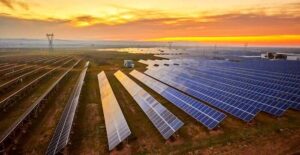How is a Solar Wire Designed to Handle Sunlight Exposure?
How is a Solar Wire Designed to Handle Sunlight Exposure?
Solar panel wires differ in their conductor material and insulation. They also vary in their resistance to environmental conditions.
For your solar system to function properly, it is essential to choose the right gauge UL-rated PV cable. These cables will be used to connect the panels in series or parallel and to the inverter.
Insulation
In any electrical system, wire insulation plays a crucial role in protecting the wiring and keeping it safe. Solar wire need to be insulated with materials that can withstand exposure to sunlight and the elements. The best choice is THHN, a thick double-insulated cable made of cross-linked polyethylene. It is resistant to ozone, UV, flame, moisture, and rodents. It also has a higher maximum voltage rating than most other types of electrical wires.
In addition to the insulation, a solar panel installer must know how to calculate the correct wire size for your system. This process is complicated, but it’s important to get it right. This will help to prevent fires, circuit overloads, and other dangerous situations. It’s also essential to follow the rules set forth by the National Electrical Code and local building inspectors.
A solar power system requires an inverter to produce usable electricity. This converts DC power from the solar panels into AC power that can be used to run household appliances. To make sure that the inverter is getting enough power from the solar panels, the wires must be properly sized. It’s also important to choose a wire that is rated for the maximum current your inverter will draw. This way, you can avoid overheating and damage to the wires and inverter. To ensure that the wires are sized correctly, it’s best to work with an electrician.

Heat Resistance
If you want to make sure that your solar power system can handle the amount of electricity it is producing, consider using a wire sizing estimator. The wire sizing calculator is helpful for determining the right thickness of solar cable to use to avoid overheating or power surges. A good rule of thumb is that the thicker the wire, the higher its amp capacity.
Wires are also classified according to their copper and aluminum content. Copper has better conductivity and heat resistance than aluminum, so copper is a good choice for solar wiring. However, copper can be expensive. To reduce costs, some people choose to use copper-clad aluminum (CCA) solar wires. However, these wires don’t safely carry the same amount of current as pure copper wires at the same gauge size.
Solar cables are insulated to protect them from moisture, ultraviolet radiation, and other environmental hazards. Different insulation types, such as THHN, THWN, UF, and USE, are available to meet the requirements of different electrical applications. Ensure that the sheath of your solar cables is properly sealed by using fastening clips made from weather-resistant or stainless steel. Also, use conduit or cable cleats to prevent them from coming loose. This can be especially important if your solar power system has to withstand frequent movement and vibrations.
Resistance to Corrosion
When connecting solar panels to a charge controller and battery, it’s important that the cable is resistant to corrosion. Otherwise, the wires can become damaged or short circuit. In order to prevent corrosion, the cable should be properly insulated and made with a premium copper core. The insulation should also be designed for the intended environmental condition, such as dry or wet.
In addition to the core material, a solar wire’s design should consider its conductivity and flexibility. For example, copper solar cables are more flexible and better heat rated than aluminum. Similarly, stranded solar wires are more flexible than solid wires. This makes them more suitable for mobile applications.
Another factor that influences the solar wire’s design is its wattage rating. Choosing the right solar wire size is vital in order to avoid overheating and maximize energy production. To determine the correct wire size, it is recommended to consult a professional electrician or check the National Electric Code (NEC) recommendations. Undersized wires are not only dangerous, but they can also result in costly power losses. Moreover, using undersized cables is a violation of the NEC in most jurisdictions. Therefore, it’s best to always use a certified electrician for any electrical wiring projects.
Strength
A solar wire must be strong enough to ensure that energy loss is kept at a minimum. The thickness of the wire also determines its strength. A thicker cable is more likely to resist damage from wind or animals. It must also be able to withstand high temperatures without bursting into flames.
The best solar wires are stranded copper ones. They are made with multiple thin copper wires to increase flexibility and reduce electrical resistance. This makes them more conductive than single solid wires of the same gauge. Copper also possesses greater durability than aluminium.
There are many different types of solar wires available in the market. Each has a different conductor material and insulation type. The choice depends on the voltage and current capacity of the system. It is important to know the total wattage of your panels before you purchase the solar wires for your system.
Once you know the wattage, you can choose the right wire gauge size. The higher the wattage, the bigger the gauge of the wires you need to handle it. It is also essential to consider the length of the wires. A thinner wire might not be able to handle the voltage drop and overheating caused by long runs. This could lead to a power surge that can cause a fire.